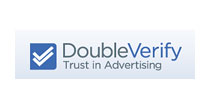 DoubleVerify announced what it calls the “First Ever Trust Index” and a report on what the company sees as compliance to its brand safety metrics among a large group of ad networks, demand-side platforms (DSPs), exchanges and publishers. Read the release. And, download it here (sign-up required).
DoubleVerify announced what it calls the “First Ever Trust Index” and a report on what the company sees as compliance to its brand safety metrics among a large group of ad networks, demand-side platforms (DSPs), exchanges and publishers. Read the release. And, download it here (sign-up required).
DoubleVerify CEO Oren Netzer discussed the research.
AdExchanger.com: What surprises you the most from the report?
We’ve been pleasantly surprised by how quickly media verification has become such an important component for every online player – not just advertisers and agencies but networks, DSPs, publishers and exchanges. The networks that are utilizing verification see it as a value add and together, partners across the board understand that increased transparency means increased trust – which ultimately drives more brand dollars online.
For this report specifically, we received an overwhelmingly positive reaction for touting the top performers in the industry rather than focusing on the negative aspects of non-compliance. We want to show that there is major progress happening in the space and it should be recognized. We plan to put this report out every six months to encourage the industry to move forward so we can all benefit.
Can you drill down on the exchanges Google’s DoubleClick Ad Exchange and Right Media Exchange? What did you see there?
The data on the exchanges is included in the platform analysis but we don’t break it out separately. Over the course of any campaign, it’s possible to encounter the following types of non-compliance: instances of ads served out of inclusion lists, in exclusion lists, alongside inappropriate content, multiple ads from the same advertiser, ads alongside a competitor, below the fold ads and ads served to international audiences.
Given the challenges certain publishers and ad networks are having – and which you identify in the report (such as below the fold, international) – are there plans for DoubleVerify to work with these ad networks and publishers to help them improve their targeting?
We’re already working with several networks, publishers and exchanges to verify the safety and security of online campaigns, not specifically for the sake of targeting, but with the goal to improve the overall quality of inventory. We help networks especially when it comes the remediation process – helping them to stay a step ahead of problems so when non-compliance occurs, they’re prepared to handle it. Media verification is key for the sell-side because advertisers are beginning to demand more transparency on exchange inventory and third-party verification allows networks to increase trust with clients, helps publishers to become more accountable and helps exchanges deliver on the promise of premium inventory without jeopardizing their publisher base. All of this movement toward accountability is crucial in order for advertisers to shift more of their budget online.
By John Ebbert












